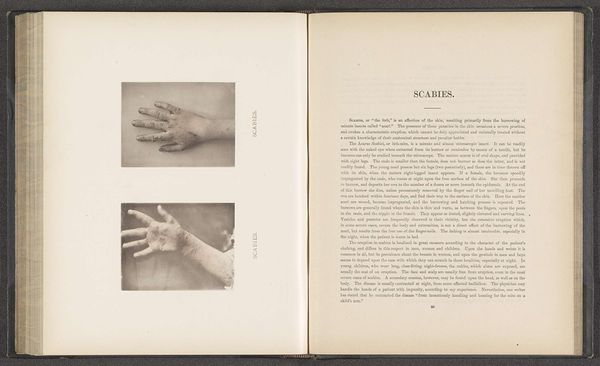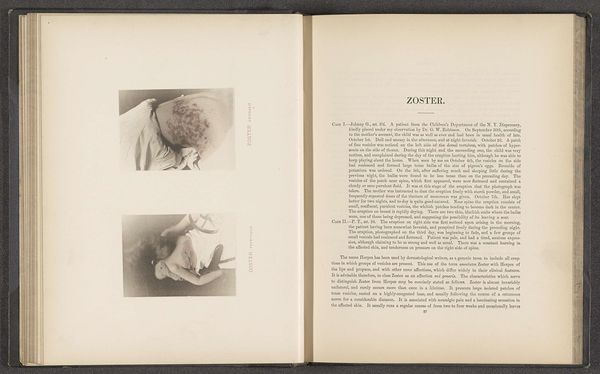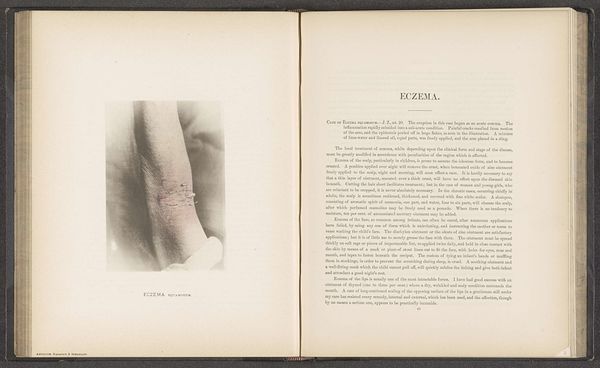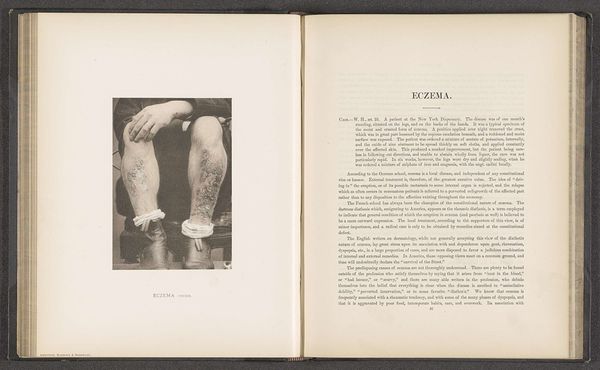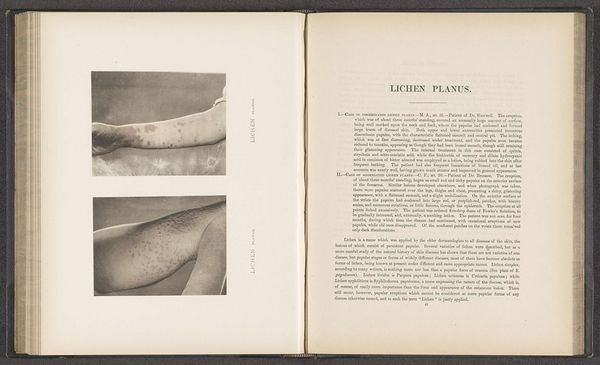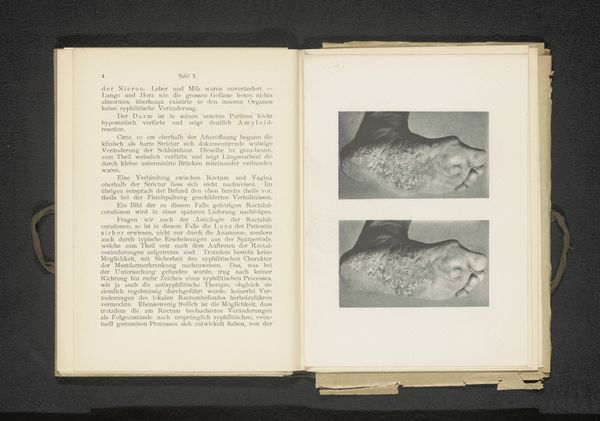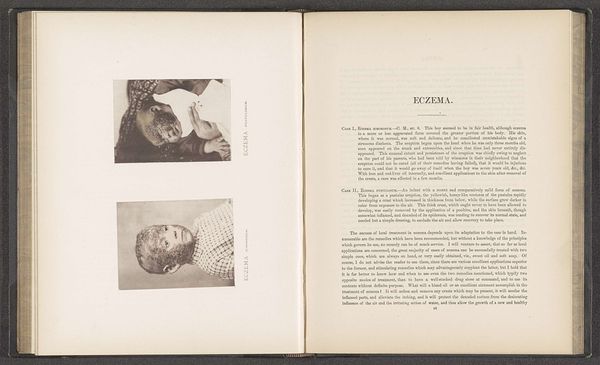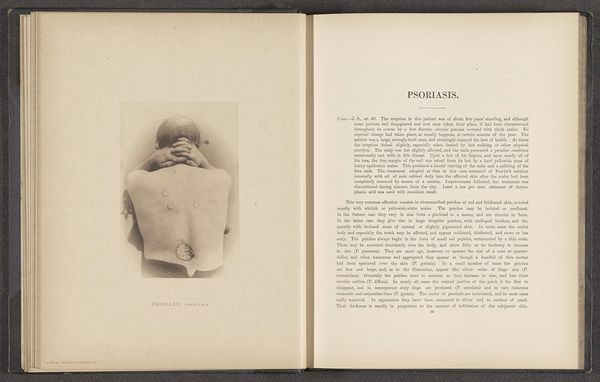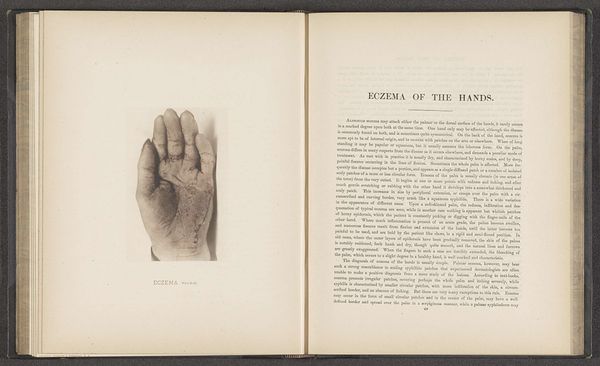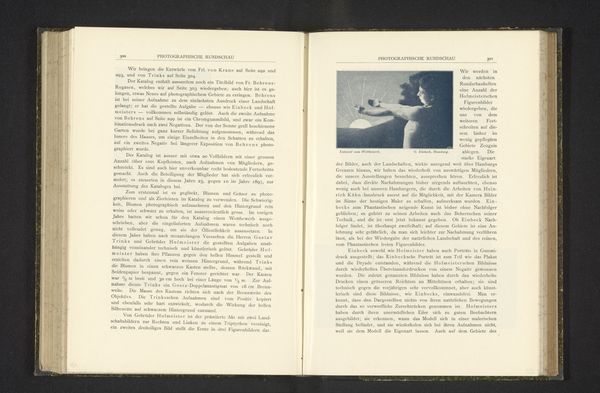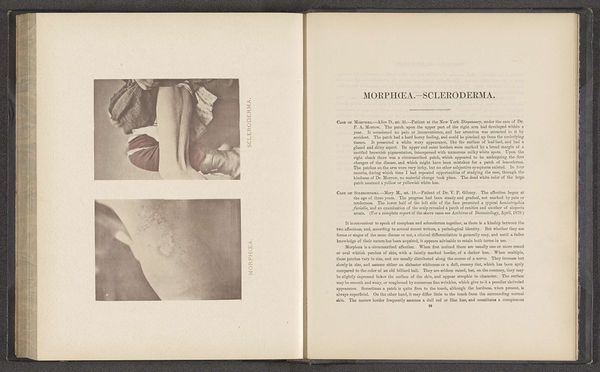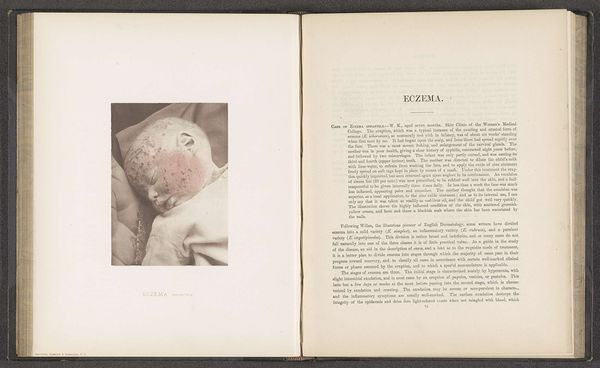
photography, gelatin-silver-print
#
portrait
#
photography
#
gelatin-silver-print
#
academic-art
#
erotic-art
#
realism
Dimensions: height 140 mm, width 100 mm
Copyright: Rijks Museum: Open Domain
Curator: I find this photograph incredibly striking. It’s a gelatin silver print of a patient suffering from eczema universalis, taken before 1881 by an anonymous photographer. What’s your initial impression? Editor: Bleak, stark. The monochrome rendering focuses attention purely on the topography of the skin itself, the play of light and shadow accentuating every fissure and imperfection. Curator: Exactly. Think about the context: 19th-century medical photography. It aimed to be objective, but it couldn't escape the gaze. Here, the male body becomes an object of clinical study, stripped bare not only literally but also of agency. Where do we place it in intersectional narratives? Is this objectivity or exploitation? Editor: But the image also achieves a strange kind of formal beauty. The tonal gradations, from almost pure white to deep grey, create a compelling abstract composition independent of its subject. Consider the arrangement of forms, the texture dominating the eye. Curator: I understand that argument, but that beauty risks aestheticizing suffering. Doesn’t it distract us from the patient’s lived experience, turning his body into simply form? The photograph's existence implies a power dynamic, between doctor and patient. We're made complicit in viewing what was intended as private, clinical. Editor: Perhaps, but to me it speaks to the capacity of photography to reveal what might otherwise be invisible. This raw surface quality speaks volumes about human vulnerability through light and shade and visual contrasts. It challenges how the clinical is viewed. Curator: That’s a fair point. It challenges our preconceptions on several levels. And maybe, by making us uncomfortable, the photograph sparks important conversations. Editor: Ultimately, the success lies in the enduring ambiguity of the piece and its compositional strength. Curator: Agreed. Whether approached from a sociopolitical or aesthetic viewpoint, its power resides in making us look, consider, and question our role as observers.
Comments
No comments
Be the first to comment and join the conversation on the ultimate creative platform.
